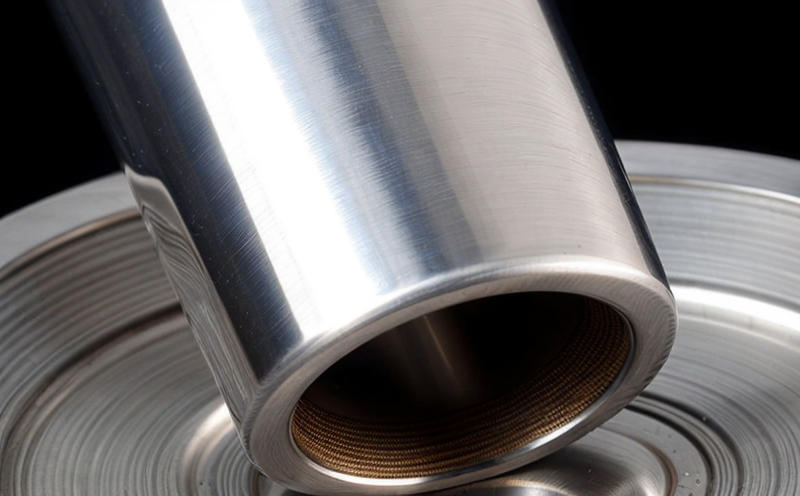Evaluating grain size in superalloys for high-temperature performance
Unlocking High-Temperature Performance Evaluating Grain Size in Superalloys with Eurolab
As industries continue to push the boundaries of innovation and efficiency, high-temperature performance has become an essential requirement for many applications. In the realm of materials science, superalloys have emerged as a vital class of alloys that can withstand extreme temperatures while maintaining their structural integrity. However, ensuring optimal high-temperature performance in these materials relies heavily on evaluating their grain size.
Grain size is a critical parameter that significantly influences the properties and behavior of superalloys under various operating conditions. It affects their strength, toughness, ductility, and resistance to creep deformation, all of which are crucial for maintaining their integrity at elevated temperatures. In this article, we will delve into the importance of evaluating grain size in superalloys for high-temperature performance and explore how Eurolab can help businesses achieve exceptional results.
Why Evaluating Grain Size is Essential
Superalloys owe their remarkable properties to their unique composition and microstructure. The grain structure of these materials plays a vital role in determining their overall behavior under heat. When evaluating grain size, researchers look for the average diameter of the grains, which can range from a few micrometers to several millimeters.
A smaller grain size typically leads to improved high-temperature properties due to
Reduced creep deformation Fine-grained superalloys exhibit increased resistance to creep, ensuring they maintain their shape and integrity under prolonged exposure to heat.
Enhanced strength Smaller grains lead to increased dislocation density, which enhances the materials strength and toughness.
Improved oxidation resistance The smaller grain size reduces the amount of intergranular diffusion, minimizing the risk of oxide formation and associated degradation.
Advantages of Evaluating Grain Size in Superalloys
Here are the key benefits of evaluating grain size in superalloys for high-temperature performance
Benefits for Businesses
Improved Performance Optimize your superalloys properties to achieve exceptional high-temperature performance, ensuring you meet or exceed industry standards.
Increased Efficiency Reduce energy consumption and extend equipment lifespan by selecting the most suitable superalloy grain size for your application.
Enhanced Reliability Ensure that your materials can withstand extreme temperatures without compromising their integrity, reducing downtime and maintenance costs.
Benefits for Researchers
Informed Material Selection Make informed decisions when choosing superalloys for high-temperature applications by understanding the optimal grain size required for your specific needs.
Accurate Predictions Develop more accurate models of material behavior under heat using precise data on grain size and its effects on properties.
Advanced Materials Development Drive innovation in materials science by exploring new compositions and microstructures tailored to specific high-temperature applications.
Benefits for Manufacturers
Competitive Advantage Stand out from competitors by leveraging the superior high-temperature performance of Eurolab-analyzed superalloys.
Cost Savings Reduce production costs by selecting the most suitable superalloy grain size, minimizing material waste and optimizing processing conditions.
Enhanced Product Quality Ensure your products meet or exceed industry standards through rigorous testing and analysis.
Evaluating Grain Size in Superalloys with Eurolab
Eurolabs laboratory service offers a comprehensive evaluation of grain size in superalloys, providing businesses with the essential data to optimize their high-temperature performance. Our state-of-the-art facilities and expert analysts ensure that each sample is carefully examined using advanced techniques such as
Light Microscopy (LM) High-resolution imaging for precise measurement of grain size.
Scanning Electron Microscopy (SEM) Detailed examination of microstructure, including grain morphology and defects.
QA Section
What are the typical applications for superalloys?
Superalloys find extensive use in high-temperature applications such as gas turbines, jet engines, nuclear reactors, and industrial heat exchangers. They are also used in aerospace components due to their exceptional strength-to-weight ratio and resistance to corrosion.
How do I choose the optimal grain size for my application?
Our team of experts will work closely with you to determine the required grain size based on your specific needs. We will consider factors such as temperature range, stress levels, and material composition to recommend the most suitable superalloy for your project.
What is the typical turnaround time for evaluating grain size in superalloys?
Our laboratory service prioritizes speed without compromising quality. We typically complete evaluations within 7-10 business days, although this may vary depending on the complexity of the sample and the workload of our analysts.
Conclusion
Evaluating grain size in superalloys is a crucial step towards achieving exceptional high-temperature performance. By understanding the optimal grain size required for your specific application, you can unlock significant advantages in terms of efficiency, reliability, and competitiveness. At Eurolab, we are committed to providing businesses with accurate and reliable data to drive innovation and success in the field of materials science.




